With the stock down -12.5% over the prior six months, investors may be tempted to sell shares of Euronet Worldwide, Inc. (NASDAQ: EEFT). In this article, I am going to calculate the fair value of Euronet Worldwide by forecasting its future cash flows and discounting them back to today’s value. Investors may find the results of the analysis surprising.
DCF Methodology
The basic philosophy behind a DCF analysis is that the intrinsic value of a company is equal to the future cash flows of that company, discounted back to present value. The general formula is provided below. The intrinsic value is considered the actual value or “true value” of an asset based on an individual’s underlying expectations and assumptions.

Cash flows into the firm in the form of revenue as the company sells its products and services, and cash flows out as it pays its cash operating expenses such as salaries or taxes (taxes are part of the definition for cash operating expenses for purposes of defining free cash flow, even though taxes aren’t generally considered a part of operating income). With the leftover cash, the firm will make short-term net investments in working capital (an example would be inventory and receivables) and longer-term investments in property, plant and equipment. The cash that remains is available to pay out to the firm’s investors: bondholders and common shareholders.
I will take you through my own expectations for Euronet Worldwide as well as explain how I arrived at certain assumptions. The full analysis was completed on Monday, March 19. An updated analysis using real-time data can be viewed in your web browser at finbox.io's Euronet Worldwide DCF analysis page. The steps involved in the valuation are:
1. Forecast Free Cash Flows
- Create a revenue forecast
- Forecast EBITDA profit margin
- Calculate free cash flow
2. Select a discount rate
3. Estimate a terminal value
4. Calculate the equity value
Step 1: Forecast Free Cash Flows
The key assumptions that have the greatest impact on cash flow projections are typically related to growth, profit margin and investments in the business. The analysis starts at the top of the income statement by creating a forecast for revenue and then works its way down to net operating profit after tax (NOPAT), as shown below.
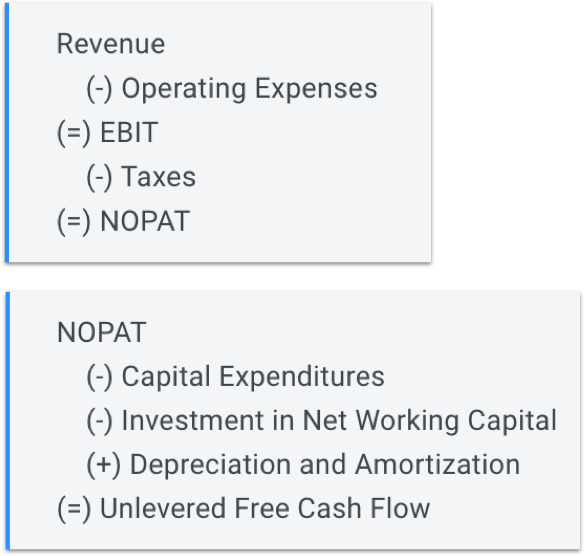
From NOPAT, deduct cash outflows like capital expenditures and investments in net working capital and add back non-cash expenses from the income statement such as depreciation and amortization to calculate the unlevered free cash flow forecast (shown above).
Create A Revenue Forecast
When available, the finbox.io’s pre-built models use analyst forecasts as the starting assumptions. To forecast revenue, analysts gather data about the company, its customers and the state of the industry. I typically review the analysts’ forecast and modify the growth rates based on historical performance, news and other insights gathered from competitors. Note that if a company only has a small number of analysts giving projections, the consensus forecast tends to not be as reliable as companies that have several analysts’ estimates. Another check for reliability is to analyze the range of estimates. If the range is really wide, it may be less accurate.
Euronet Worldwide provides payment and transaction processing and distribution solutions to financial institutions, retailers, service providers, and individual consumers worldwide. The company was founded in 1994 and is headquartered in Leawood, Kansas. Analysts covering the stock often compare the company to a peer group that includes DST Systems, Inc. (NYSE: DST), Global Payments Inc. (NYSE: GPN), Total System Services, Inc. (NYSE: TSS), and Western Union Company (NYSE: WU).
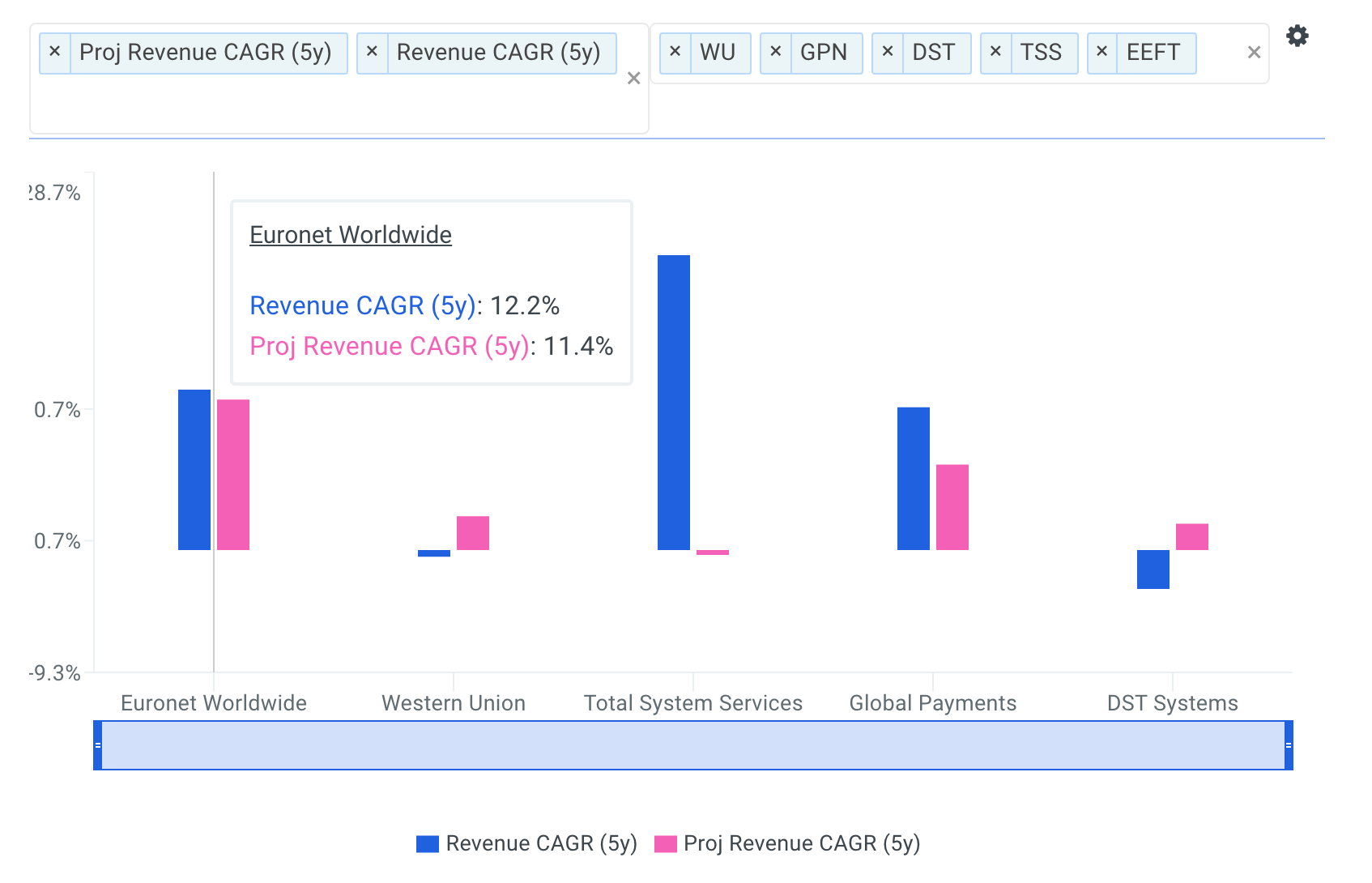
source: Benchmarks: Forecasted 5yr Revenue CAGRs
The company's 5-year revenue CAGR of 12.2% is above its selected comparable public companies: DST (-3.0%), GPN (10.8%) and WU (-0.5%) and only below TSS (22.4%). The company's projected 5-year revenue CAGR of 11.4% is above all of its selected comparable public companies.
As highlighted below, Euronet Worldwide's revenue growth has ranged from 6.5% to 17.8% over the last five fiscal years.
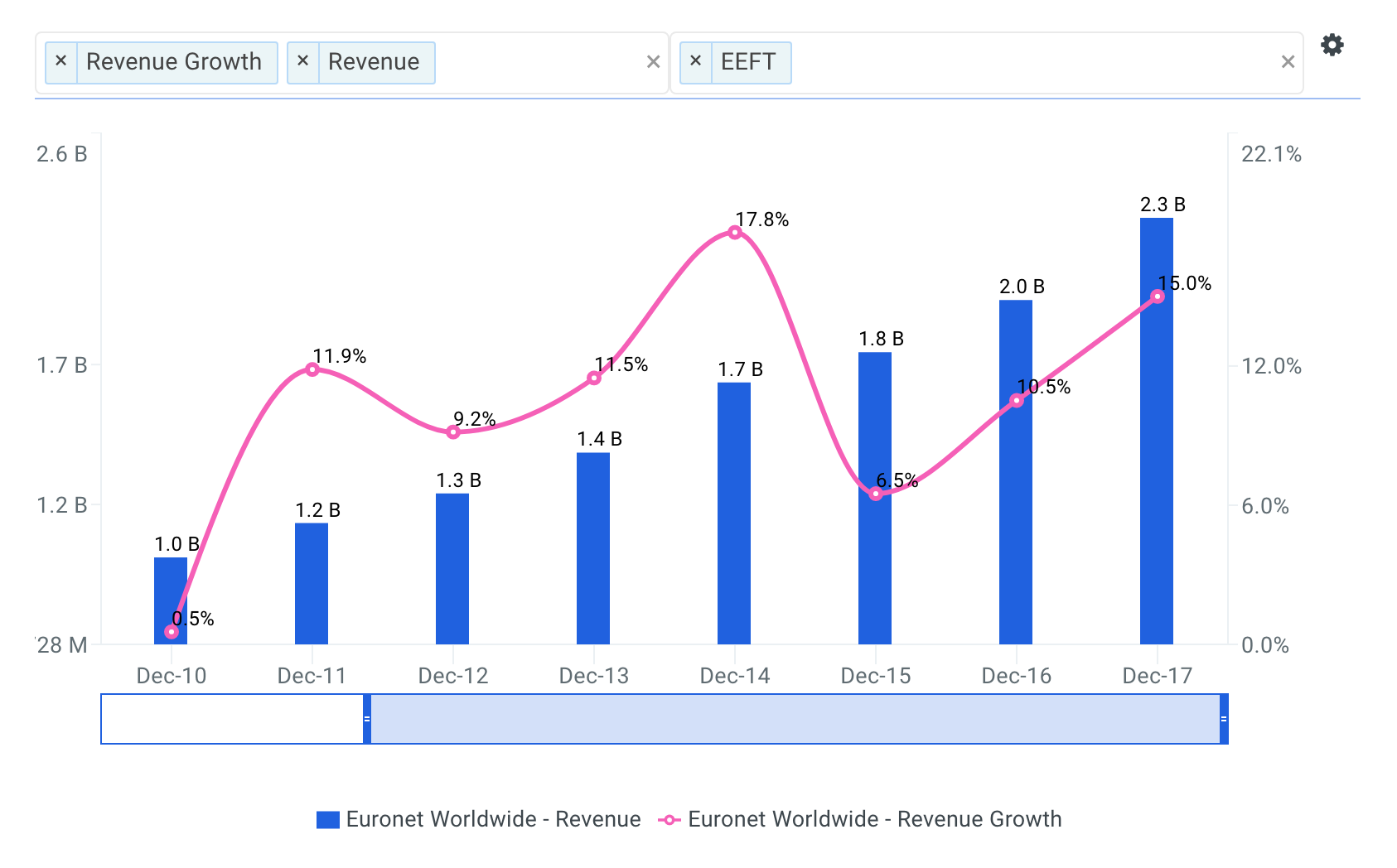
Going forward, analysts forecast that Euronet Worldwide's total revenue will reach $3,869 million by fiscal year 2022 representing a five-year CAGR of 11.4%. However, I conservatively adjusted my growth estimates lower as illustrated in the table below.

Forecast Euronet Worldwide's EBITDA Profit Margin
The next step is to forecast the company’s earnings before interest, taxes, depreciation and amortization (EBITDA). Note that EBITDA is a commonly used metric in valuation models because it provides a cleaner picture of overall profitability, especially when benchmarking against comparable companies. This is because it ignores non-operating costs that can be affected by certain items such as a company’s financing decisions or political jurisdictions. For more detail, see Euronet Worldwide's EBITDA definition.
EBITDA margin is calculated by dividing EBITDA by revenue. The higher the EBITDA margin, the smaller the firm’s operating expenses are in relation to its revenue, which may ultimately lead to higher profit. Lower operating expenses for a given level of revenue can be a sign of internal economies of scale.
The charts below compare Euronet Worldwide's LTM EBITDA margin to the same peer group. The company's EBITDA margin of 16.6% is below all of its selected comparable public companies: DST (18.6%), GPN (26.5%), TSS (23.2%) and WU (21.7%).
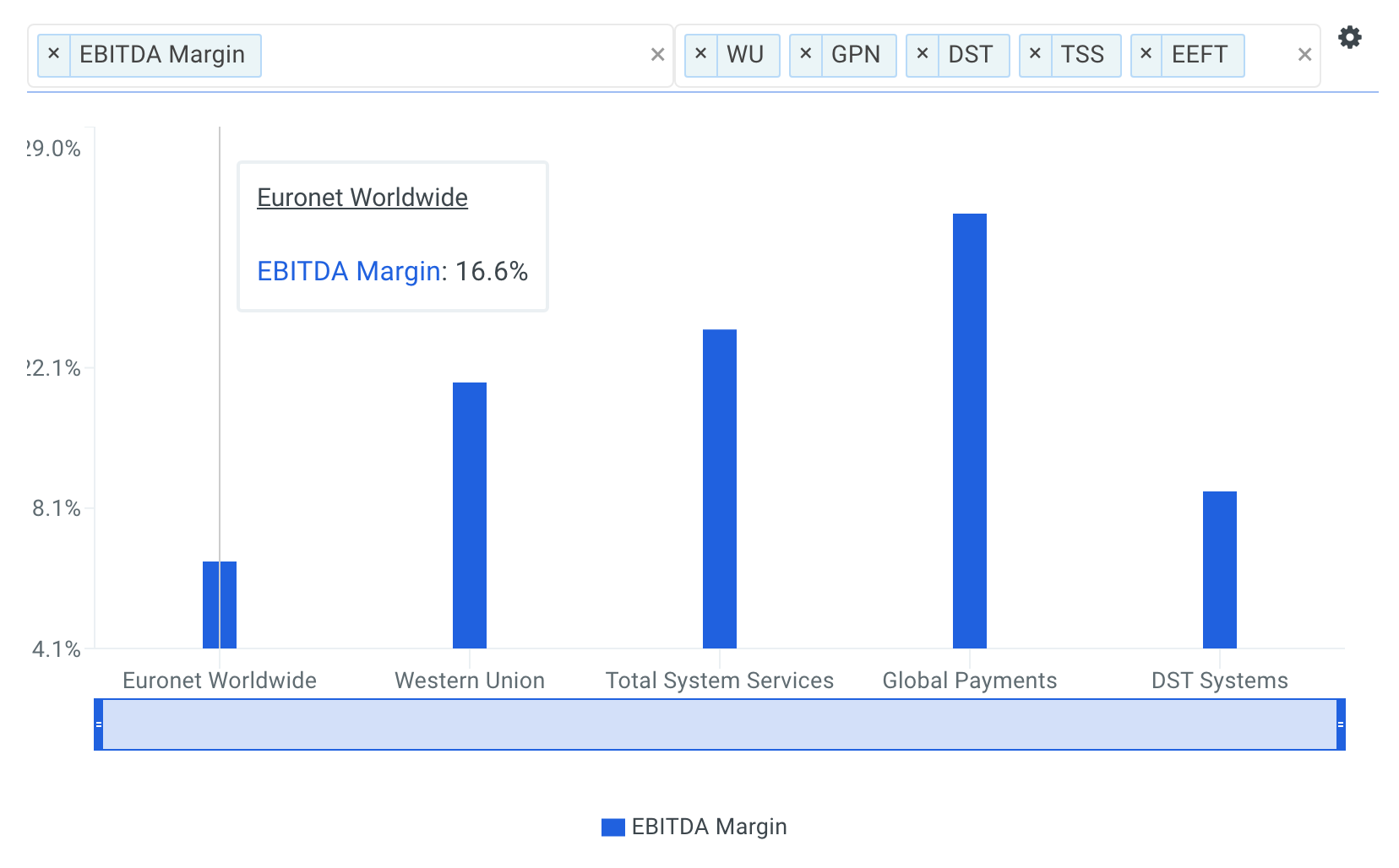
Euronet Worldwide's EBITDA margin has ranged from 13.1% to 17.5% over the last five fiscal years.

Wall Street analysts are forecasting that Euronet Worldwide's EBITDA margin will reach 25.0% by fiscal year 2022, representing an increase of 8.3% from its LTM EBITDA margin of 16.6%. However, I find this too bullish based on the company's recent performance. Therefore, I changed this assumption in my model and kept Euronet Worldwide's EBITDA margin at 22.5% starting in fiscal year 2021.

Although I don't specifically walk through my assumptions here, I then forecasted depreciation & amortization, capital expenditures and net working capital based on historical levels.
Calculate Free Cash Flow
With all required forecasts in place, the next step is to calculate projected free cash flow as shown below.
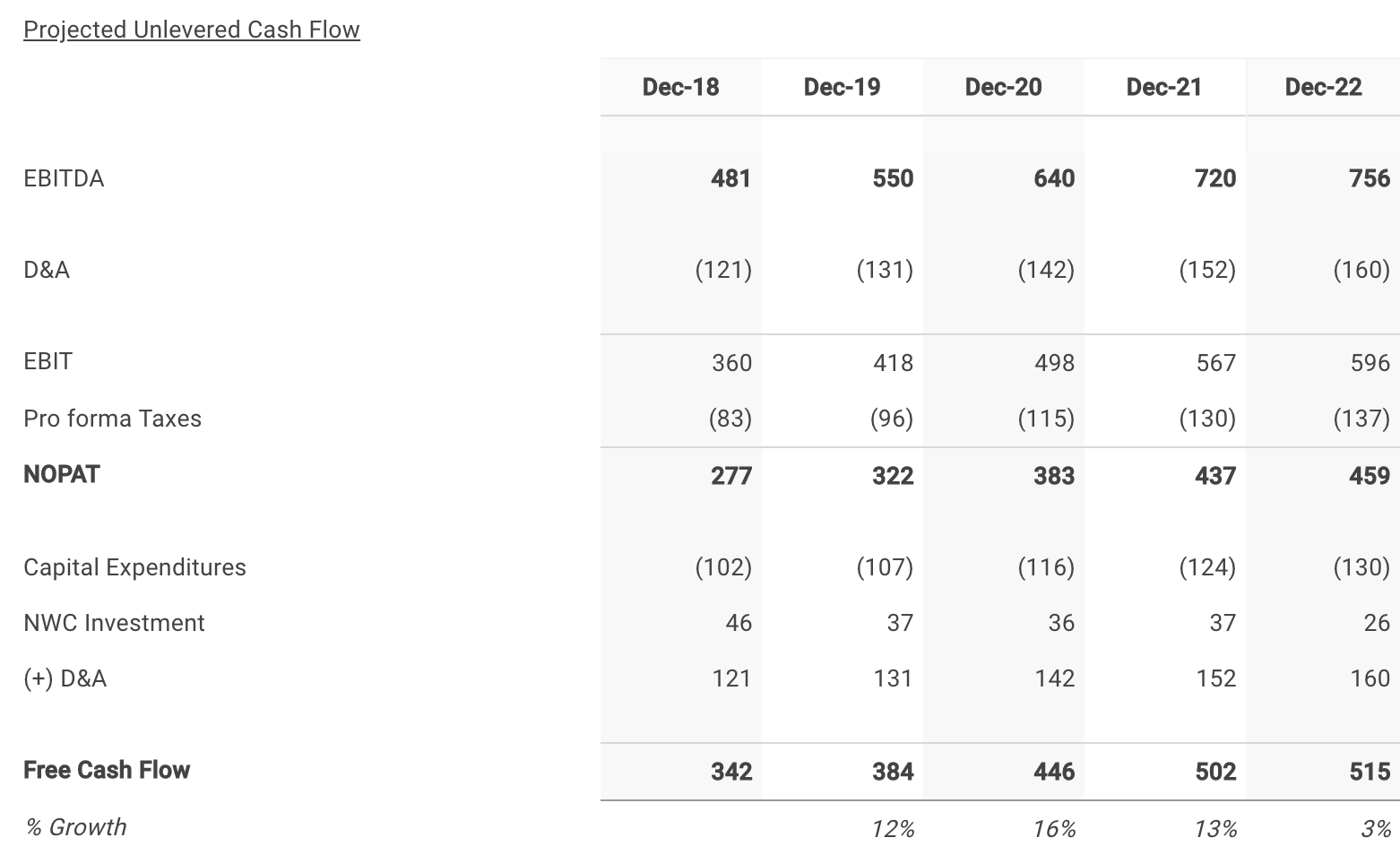
Step 2: Select Euronet Worldwide's Discount Rate
The next step is to select a discount rate to calculate the present value of the forecasted free cash flows. I used finbox.io’s Weighted Average Cost of Capital (WACC) model to help arrive at an estimate. Generally, a company’s assets are financed by either debt (debt is after tax in the formula) or equity. WACC is the average return expected by these capital providers, each weighted by respective usage. The WACC is the required return on the firm’s assets.
It’s important to note that the WACC is the appropriate discount rate to use because this analysis calculates the free cash flow available to Euronet Worldwide’s bondholders and common shareholders. On the other hand, the cost of equity would be the appropriate discount rate if we were calculating cash flows available only to Euronet Worldwide’s common shareholders (i.e., dividend discount model, equity DCF). This is commonly referred to as the difference between free cash flow to equity (FCFE) and free cash flow to the firm (FCFF). By using the WACC to discount FCFF, we are calculating total firm value. If we discounted FCFE at the required return on equity, we would end up with equity value of the firm. Equity value of the firm is simply total firm value minus the market value of debt.
I determined a reasonable WACC estimate for Euronet Worldwide to be 12.0% at the midpoint. An updated cost of capital analysis using real-time data can be found at finbox.io's Euronet Worldwide WACC Model Page. The DCF model then does the heavy lifting of calculating the discount factors by applying the mid-year convention technique.
Step 3: Estimate Euronet Worldwide's Terminal Value
Since it is not reasonable to expect that Euronet Worldwide will cease its operations at the end of the five-year forecast period, we must estimate the company’s continuing value, or terminal value. Terminal value is an important part of the DCF model because it accounts for the largest percentage of the calculated present value of the firm. If you were to exclude the terminal value, you would be excluding all the future cash flow past the horizon period. Using finbox.io, users can choose a five-year or 10-year horizon period to forecast future free cash flow.
The most generally accepted techniques to calculate a terminal value are by applying the Gordon growth approach, using an EBITDA exit multiple and using a revenue exit multiple. This analysis applies the Gordon growth formula:

As the formula suggests, we need to estimate a “perpetuity” growth rate at which we expect Euronet Worldwide’s free cash flows to grow forever. Most analysts suggest that a reasonable rate is typically between the historical inflation rate of 2% to 3% and the historical GDP growth rate of 4% to 5%.
Euronet Worldwide's free cash flows are still growing at a healthy rate at the end of the projection period, so I’ve selected a perpetuity growth rate of 4.0% (at the midpoint).
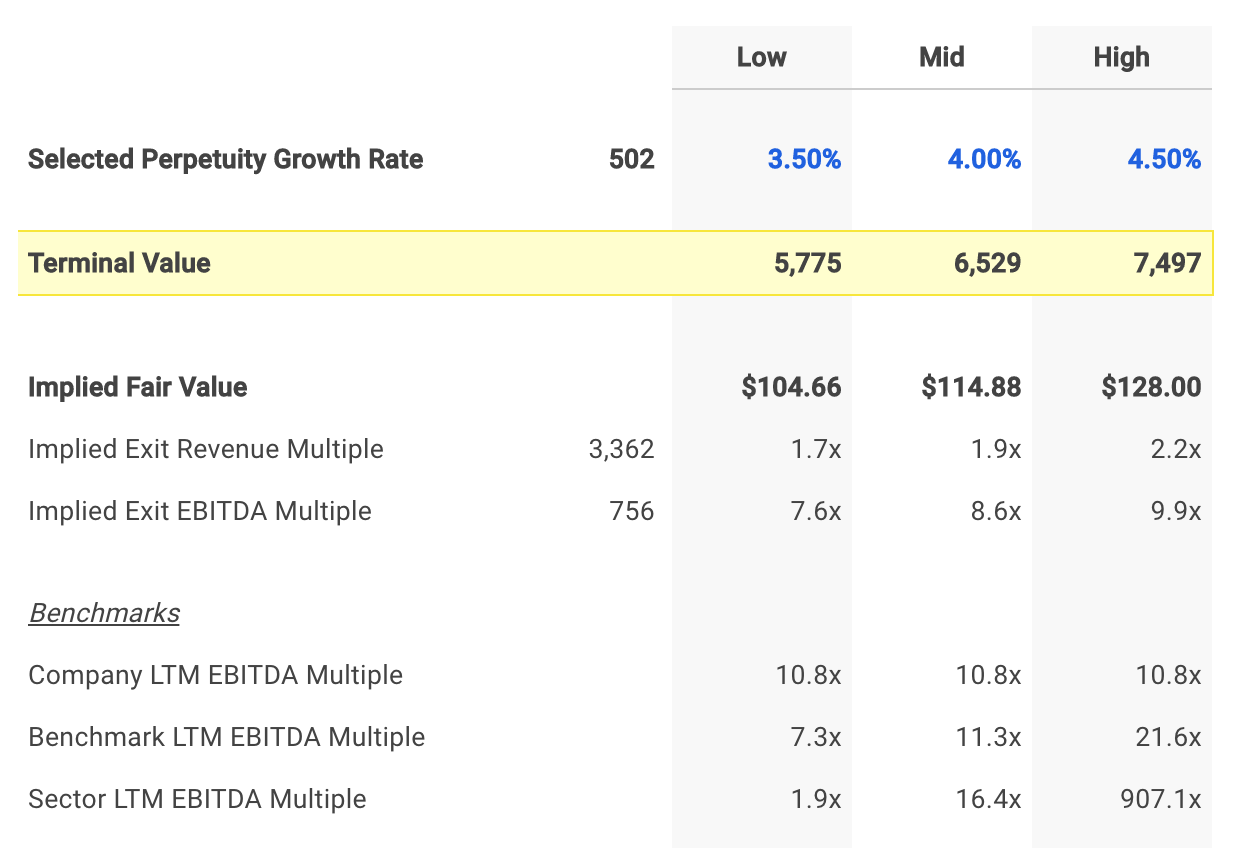
An EBITDA multiple is calculated by dividing enterprise value by EBITDA. Similarly, the terminal EBITDA multiple implied from a DCF analysis is calculated by dividing the terminal value by the terminal year’s projected EBITDA. Comparing the terminal EBITDA multiple implied from the selected growth rate to benchmark multiples can serve as a useful check.
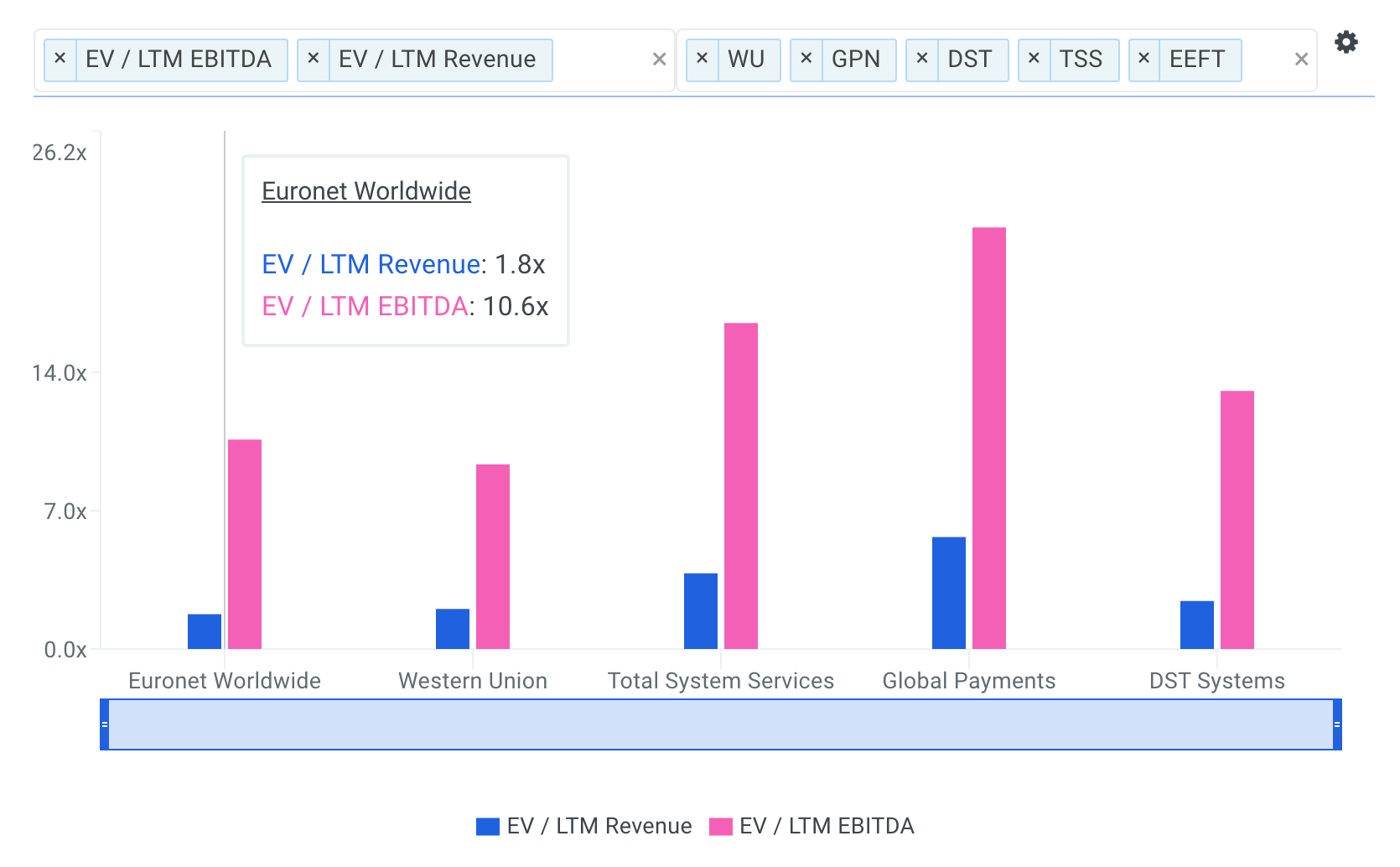
Euronet Worldwide's implied EBITDA multiple of 8.6x is below the company's current multiple as well as the benchmark multiple. This implies that we may have actually undervalued the company which is not entirely surprising due to the conservative assumptions I have driving the model.
Step 4: Calculate Euronet Worldwide's Equity Value
The enterprise value previously calculated is a measure of the company’s total value. An equity waterfall is a term often used by valuation firms, referring to the trickle-down process of computing a company’s equity value from its enterprise value. Note that in the event of a bankruptcy, debt holders will be paid in full before anything is distributed to common shareholders. Therefore, we must subtract debt and other financial obligations to determine a firm’s equity value. The general formula for calculating equity value is illustrated in the figure below.

The model uses the formula shown above to calculate equity value and divides the result by the shares outstanding to compute intrinsic value per share as shown at the bottom of the figure below.

The assumptions I used in the model imply an intrinsic value per share range of $104.66 to $128.00 for Euronet Worldwide.
Euronet Worldwide's stock price currently trades at $86.37 as of March 20th, 34.2% below the midpoint value of $114.88.
Conclusion: Euronet Worldwide Has Upside Potential
A DCF analysis can seem complex at first, but it’s worth adding to your investment analysis toolbox since it provides the clearest view of company value.
Euronet Worldwide's stock has lost value over the prior six months and may be time for investors to add shares. The stock still appears to have further upside potential based on its future cash flow projections.
Note that a DCF analysis is only one side of the coin in terms of building your investment thesis, and it shouldn’t be the only tool you use when researching a company. I recommend you continue to research Euronet Worldwide to get a more comprehensive view of the company by looking at:
Valuation Metrics: how much upside do shares of Euronet Worldwide have based on the Ben Graham Formula? Take a look at our Ben Graham Formula data explorer which also compares the company's upside to its peers.
Efficiency Metrics: fixed asset turnover is calculated by dividing revenue by average fixed assets. View Euronet Worldwide's fixed asset turnover here.
Efficiency Metrics: how much free cash flow does Euronet Worldwide generate as a percentage of total sales? Has it been increasing or decreasing over time? Review the firm's free cash flow margin here.
Author: Brian Dentino
Expertise: financial technology, analyzing market trends
Brian is a founder at finbox.io, where he's focused on building tools that make it faster and easier for investors to research stock fundamentals. Brian's background is in physics & computer science and previously worked as a software engineer at GE Healthcare. He enjoys applying his expertise in technology to help find market trends that impact investors.
Brian can be reached at [email protected].
As of this writing, Brian did not hold a position in any of the aforementioned securities and this is not a buy or sell recommendation on any security mentioned.

